
People

Principle Investigators

Dr. Mike Heithaus, Florida International University
I have been working in Shark Bay for more than 15 years. From 1994-1996 I worked with Dr. Richard Connor on the social behavior of male bottlenose dolphins. In 1997, I began my PhD research in Shark Bay with Dr. Larry Dill and we founded the Shark Bay Ecosystem Research Project in 1999. Although my initial studies were focused on the influence of food abundance (fish) and tiger shark predation risk on habitat use by bottlenose dolphins, I soon became interested in the ecological importance of tiger sharks in the ecosystem - especially effects mediated by anti-predator behavior of their prey ("risk effects"). The first phase of my work, in collaboration with many SBERP researchers was in documenting the direct effects of tiger shark predation risk on habitat use, diving behavior, and foraging decisions of a diversity of potential shark prey species. Now, work in my lab is focused on elucidating how risk effects may be transmitted through the food web to seagrasses and the communities that they support through predation sensitive foraging by herbivores (both large and small) and how the effects of shark predation risk might vary with context. In addition to my work in Shark Bay my lab investigates the ecological role of upper trophic level predators in a number of settings including in the Florida Coastal Everglades.
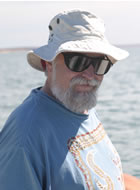
Dr. Lawrence Dill, Simon Fraser University
My major research interests are in the development and testing of cost-benefit models of behavior, and experimental studies of the decision rules used by animals to ensure adaptive behavior in various contexts. The emphasis is on understanding how behaviors maximize individual fitness; this is achieved by experimental analyses of the benefits and costs of the various behavioral alternatives available to the animal. Although I am biased towards laboratory studies, where experimental variables can be more readily controlled, fieldwork is often necessary to put the findings into a proper ecological context. In Shark Bay, we are currently engaged in a long-term research program, examining the behavioral interactions between a number of large marine species (bottlenose dolphins, tiger sharks and sea turtles).
Dr. James Fourqurean, Florida International University
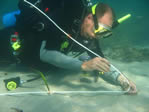
I am a marine ecologist with particular interest in seagrass ecology and nutrient cycling at the ecosystem scale. Both my background and research are broad and interdisciplinary. I have been addressing issues of both scientific and practical interest at the meeting of the disciplines of biogeochemistry, ecology, hydrology and applied statistics. I have investigated the role of light and nutrient availability in seagrass physiology and ecology, the sources and fates of nutrients in bays and estuaries, and factors that limit primary production in the marine system. Most of my research has been centered in Florida and the Caribbean to date, but I am now applying the knowledge I have gained in these systems to Shark Bay.
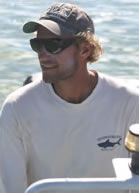
Dr. Aaron Wirsing, University of Washington
My research program addresses sources of contingency in the outcome of predator-prey interactions. In particular, I am interested in the degree to which the nature of predator "risk" (or non-consumptive) effects on prey populations and communities hinge on prey escape behavior, predator hunting mode, and the setting of the interaction (i.e., landscape features). I pursue this interest using predator-prey networks in north-central Washington State (e.g., gray wolf, white-tail deer, mule deer) and Shark Bay. My Shark Bay work is focused primarily on the relationship between sharks and dugongs.
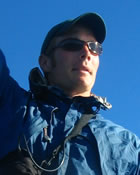
Dr. Jordy Thomson, Postdoctoral scientist, Florida International University
My research focuses on several questions: 1) how is diving behavior of green and loggerhead turtles influenced by the physical environment (e.g. water temperature) and the risk of predation from tiger sharks; 2) how are habitat use decisions of loggerhead turtles influenced by the distribution and abundance of their prey and risk from tiger sharks; 3) how important are species-, habitat-, and season-specific surfacing patterns for correcting abundance estimates from transect surveys (aerial or boat based). These studies have involved boat-based surveys of turtle distribution, area-wide surveys of invertebrate prey abundance, deployments of time depth recorders on turtles, and monitoring shark abundance. I also have validated rapid visual estimate techniques for quantifying turtle body condition using mass-length based indicies. Since finishing my PhD at Simon Fraser University, I have started extending my initial studies to gain further insights into factors driving habitat use and diving behavior of sea turtles in Shark Bay.
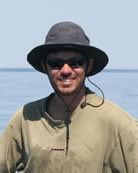
Dr. Jeremy Vaudo , Postdoctoral scientist, Nova Southeastern University
Mesopredators represent the links between top predators and lower levels of the food web. The numerical and behavioral responses of mesopredators to top predators and their ability to impact their prey's behavior or populations are critical to the transmission or attenuation of trophic cascades. Rays are a group of mesopredators that have received relatively little attention in the scientific literature. My research focues on the resource and habitat use of the diverse community of rays found in Shark Bay. Understanding how these rays use their habitat and the underlying factors for this habtiat use will help us understand how the impacts of top predators (i.e. large sharks) cascade through the Shark Bay system. I completed my PhD at Florida International University in 2011 and I am now developing projects to investigate the ecosystem impacts of ray foraging in Shark Bay.
Derek Burkholder, PhD Candidate, Florida International University
My primary research interests are predator-prey behavioral interactions and their impact on both prey populations and the structure of marine communities. My research examines the ecological role of green turtles (Chelonia mydas), the community and nutrient dynamics of seagrasses across multiple spatial and temporal scales, and the possibility that tiger sharks initiate a behavior-mediated trophic cascade that is mediated by predation-sensitive shifts by turtles and dugongs. I completed my PhD at Florida International University in 2012.
Graduate Students
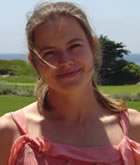
Cindy Bessey , PhD Candidate, Florida International University
My broad research interests are in the field of animal behavior and how animals modify their behaviors in changing conditions to meet their life history requirements. Specifically, I am interested in how lower trophic level organisms are impacted through trophic cascades. My current research will focus on habitat use of the facultative herbivorous fish Pelates sexlineatus (Six-Lined Trumpeter) in the seagrass beds of Shark Bay, Australia. I will investigate what conditions occur that promote or discourage herbivory in these fish. I would like to investigate which seagrasses are preferred, as well as the changes in intensity of grazing in both the presence and absence of megagrazers and piscivores. I will also investigate the variation in abundance of these fish in structurally diverse seagrass habitats, and the structural changes to the seagrass bed that result from the grazing behavior of P. sexlineatus.

Robert Nowicki , PhD Candidate, Florida International University
My research interests are focused on the interface of behavioral and community ecology. Specifically, I am interested in behavioral shifts that consumers make in response to predation risk, and how these behavioral shifts interact with other factors to shape ecosystems. These interactions are particularly important to understand as large bodied marine predators continue to decline worldwide. For my dissertation work, I intend to mimic both tiger shark loss and disturbance regimes in seagrass beds in order to investigate the importance of tiger sharks in facilitating ecosystem resilience. This work will make use of a large-scale seagrass dieback (likely due to temperatue stress) that occurred in 2012.
Collaborators
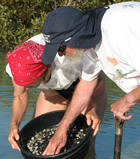
Dr. Ray and Pat Heithaus, Kenyon College
We are collaborating to better understand the food web links between fringing mangroves and seagrass habitats. We want to know whether species of fishes found in both habitats transport mangrove-derived nutrients to enhance seagrass communities. We are using carbon and nitrogen stable isotopes to investigate this question.
Dr. Mahmood Shivji, NOVA Southeastern University
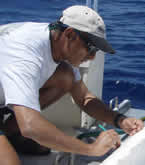
Mahmood Shivji is the director of the Guy Harvey Research Institute and Save Our Seas Shark Research Center at Nova Southeastern University. His research focuses on employing integrative approaches in the service of marine conservation and management with a focus of fishes and coral reef ecosystems. He is working on the movements and genetics of tiger sharks and other elasmobranchs worldwide, including Shark Bay.
Dr. Anne Salomon, Simon Fraser University
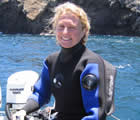
My research is motivated by a deep interest in the human alteration of marine food webs and the extent to which these disturbances modify the species interactions, productivity and resilience of temperate coastal ecosystems. Overall, my research strives to inform conservation and management strategies with quantitative and integrative sciences. To achieve this I collaborate with fisheries scientists, oceanographers, social scientists and archeologists and employ a diverse array of empirical and quantitative techniques. My work in Shark Bay focuses on using satellite telemetry to determine the movements of male loggerhead turtles.
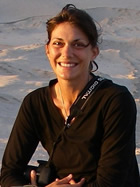
Sabrina Trocini, Murdoch Veterinary School
I am a PhD candidate at Murdoch University in Perth, Western Australia. The main objective of my study is to investigate two very important aspects for loggerhead turtle conservation and management: hatching success and health. My field sites are Dirk Hartog Island in Shark Bay, the largest loggerhead turtle rookery in Australia and the Eastern Indian Ocean, and Bungelup beach in Cape Range National Park, a significant Western Australian mainland rookery. In collaboration with SBERP I am also screening the foraging population in Shark Bay for a parasite that I identified in both nesting populations so that we can gain a better insight into the epidemiology and clinical significance of the disease.
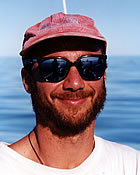
Dr. Alejandro Frid, Vancouver Aquarium
Alejandro was in Shark Bay in 2000 and initiated the studies on diving behavior of sea turtles. After Shark Bay, his work moved to Alaska where he studied the influence of prey distribution and predator distribution on harbor seal diving behavior. He completed his PhD in 2006, but he is still collaborating on data analysis and writing papers about Shark Bay's turtles and the ecological role of large sharks including tiger sharks.
Staff Scientist

Kirk Gastrich, Marine Scientist, Florida International University
My past work includes studies of muscle biochemistry, physiology, and swimming performance of fishes. Currently, I am involved in multiple research projects in Shark Bay. Most of my work has focused on ensuring that long-term datasets, including those based on transects and shark fishing, continue to be collected and maintaining and monitoring seagrass exclosure experiments. In 2009, I will be heavily involved in seagrass transplant experiments and studies of fish communities.
Media Consultant and Producer

Patrick Greene, Symbio Studios
Patrick first came to Shark Bay as a research assistant in 1999 and 2000 then went on to be a producer and director of photography for numerous documentaries for National Geographic Channel, Discovery Channel, History Channel, and others. Two of these documentaries focused on work by SBERP. Patrick continues to work in Shark Bay to produce videos for the website and SBERP educational materials.
SBERP Alumni
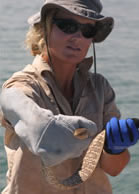
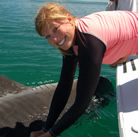
Katy Cameron, MS, Florida International University
Katy investigated regional variation in tiger shark abundance and habitat use. She finished her Master's in 2010.
Megan Kerford, MS, Simon Fraser University
Meg was in Shark Bay in 2003 and 2004, studying the behavior and diets of Shark Bay's sea snakes. This work included the first video monitoring of fish communities in Shark Bay (looking at tidal effects on fish abundance in nearshore sand habitats), which is now being expanded considerably. She finished her Master's in 2005, and has published one manuscript from her thesis. She is currently working on preparing other manuscripts.
Erica Olsen, MS, Simon Fraser University
Erica's work in Shark Bay used satellite telemetry to monitor and quantitatively assess the large-scale movement patterns of male loggerhead turtles in Shark Bay.
Tina Semeniuk, MS, Simon Fraser University
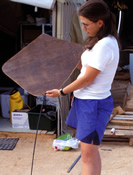
I was in Shark Bay during the fall and winter months of 2000 and 2001 studying the anti-predator behaviors of stingrays at rest. Specifically, I investigated the benefits and costs associated with facultative group resting in the cowtail stingray, as well as the possible benefits accrued to the cowtail by forming mixed-species groups with the reticulate whipray. I am currently working on my PhD at Simon Fraser University's School of Resource and Environmental Management, investigating the ecological and social impacts of feeding stingrays as a marine tourism attraction in the Cayman Islands.
All photographs copyrighted; Images may be used for educational purposes. For use in other forms contact Mike Heithaus

